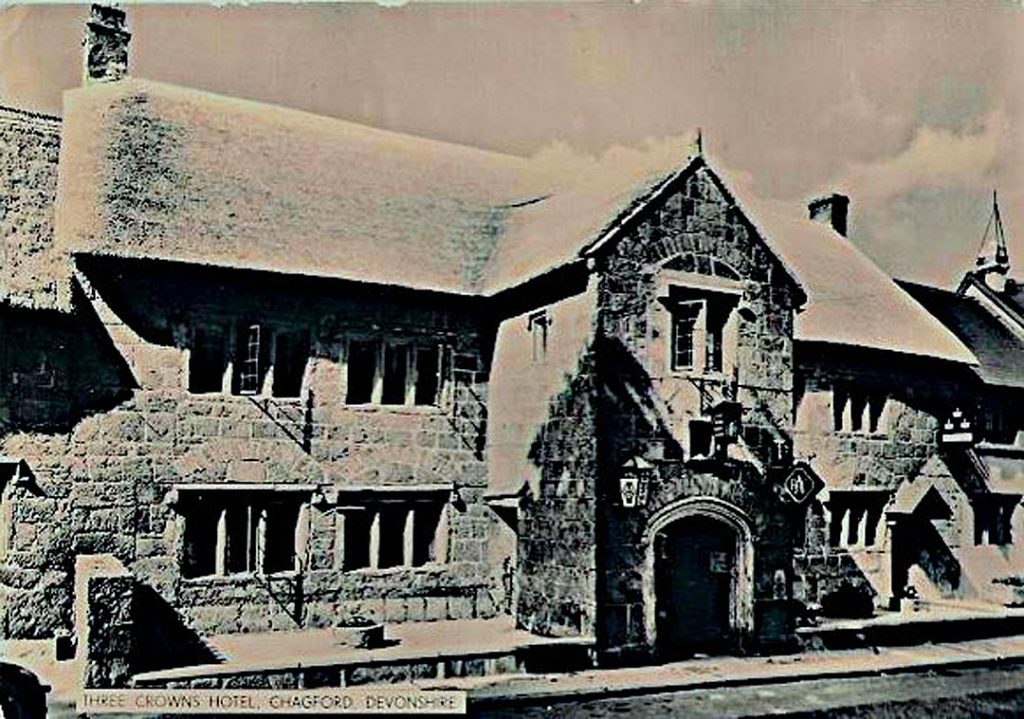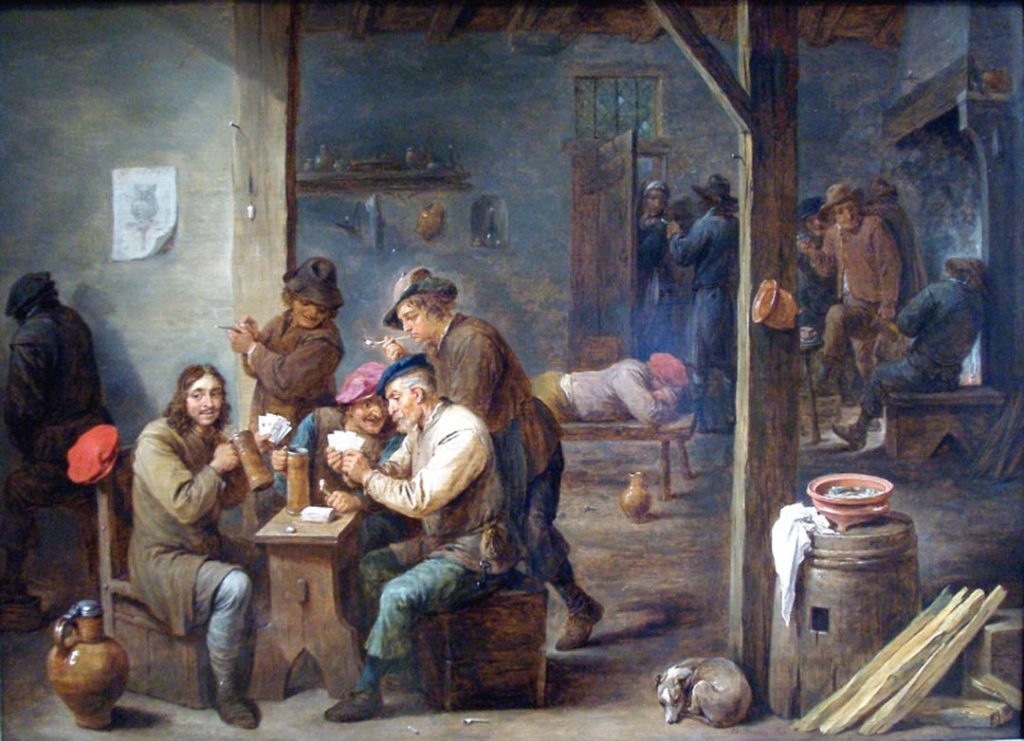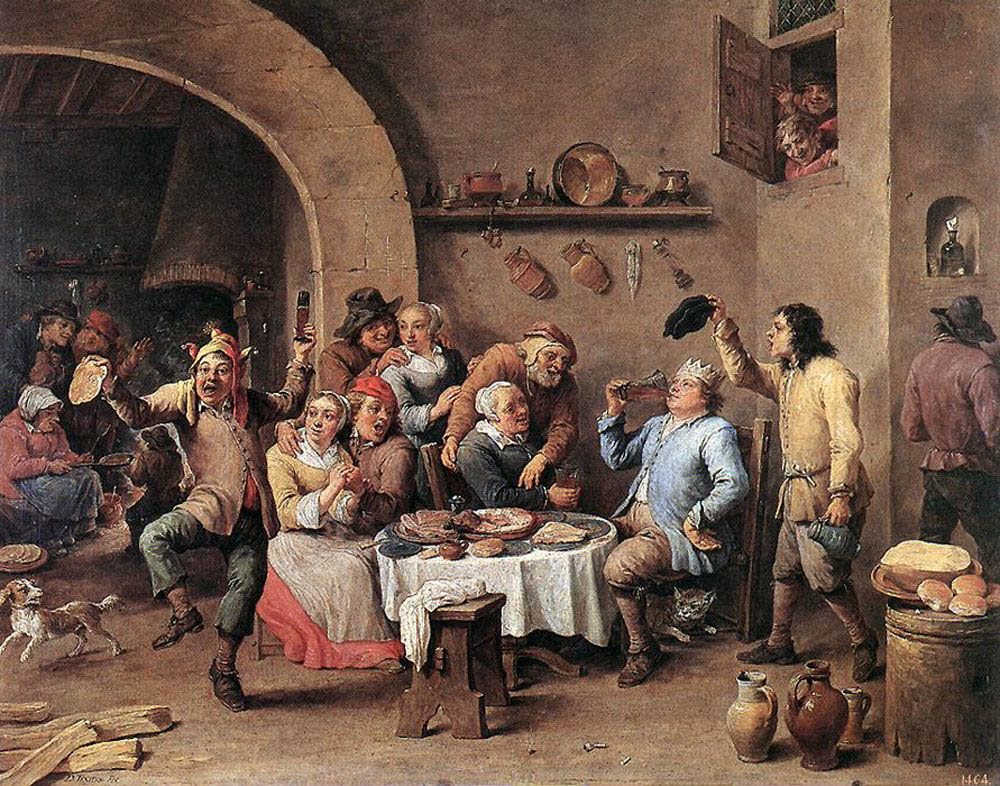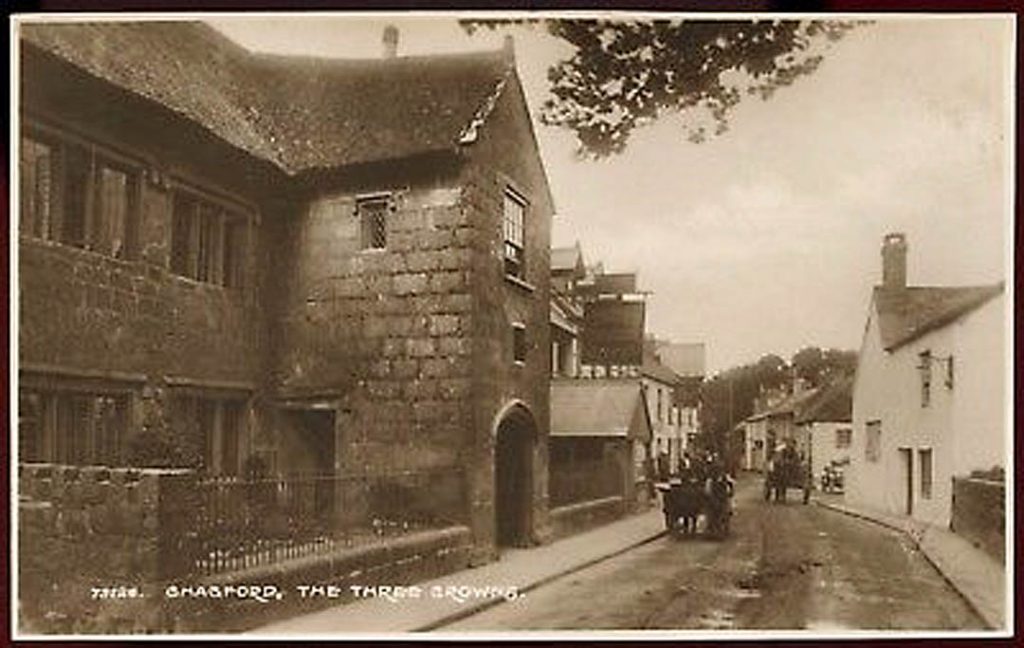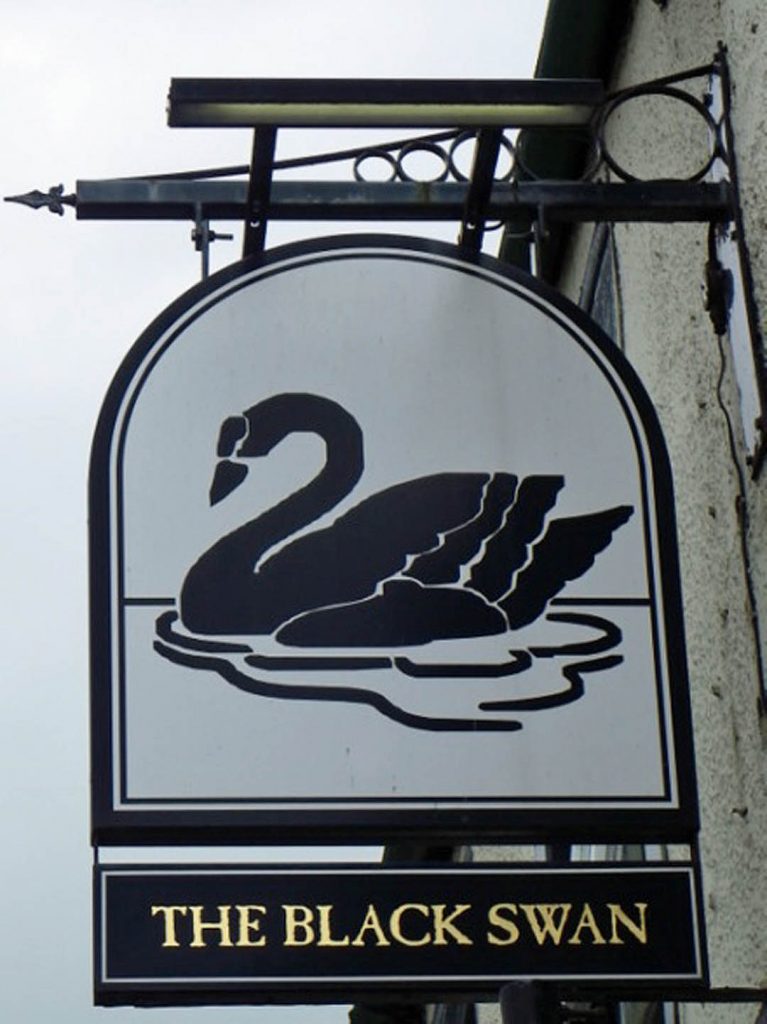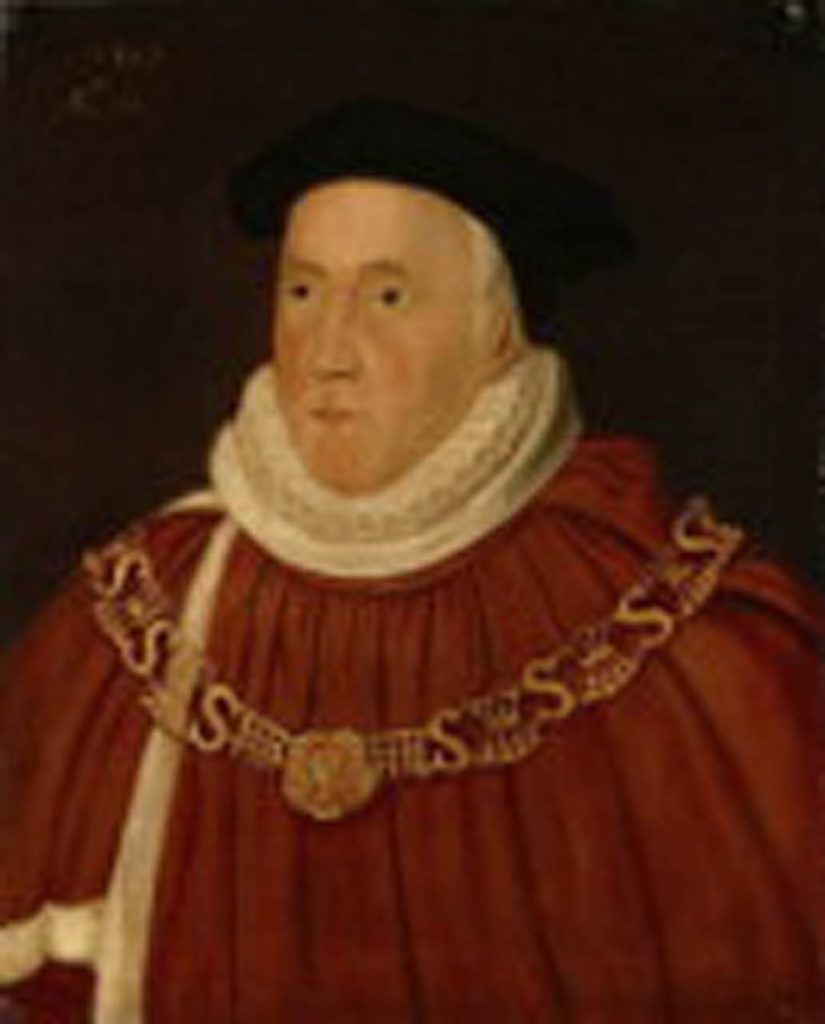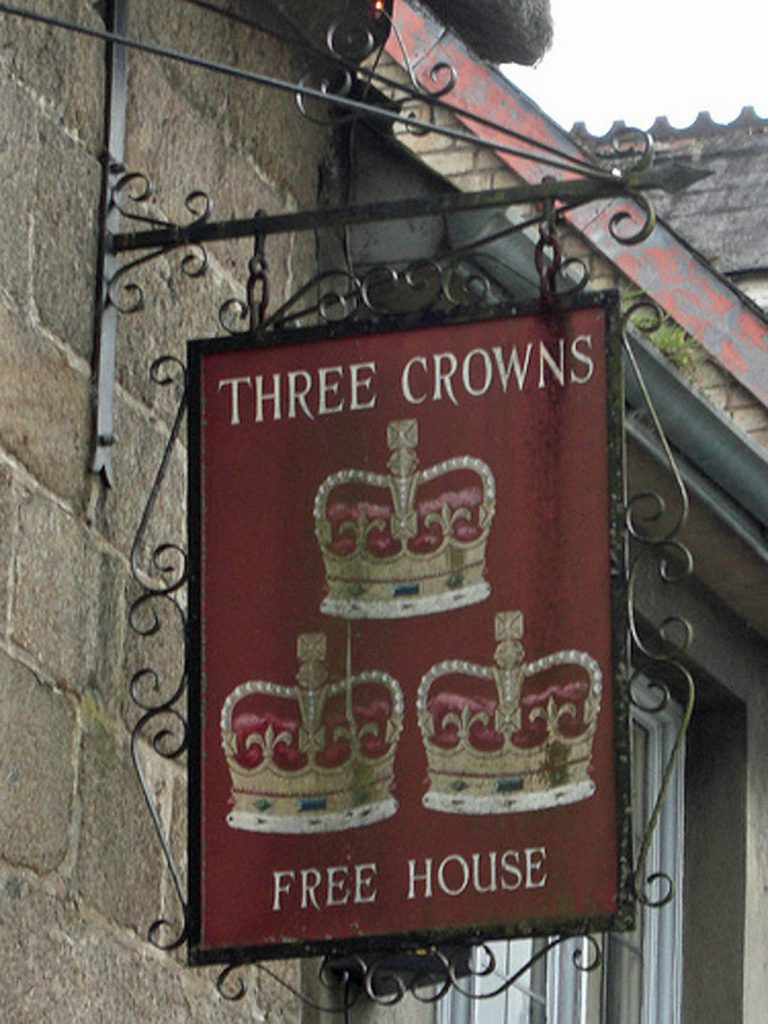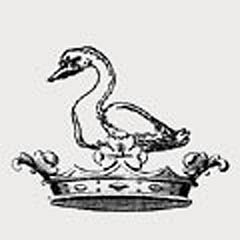
Built in the 1550’s or 1560’s as a town house for the well to do Whiddon family and becoming ‘The Black Swan’ in the late 1600’s. The Black Swan being part of the Whiddon family crest.
What was it like to call in here, at the Black Swan in the 16th and 17th Centuries ? Were you standing in an Inn, a Tavern or an Alehouse?
In the 16th and 17th centuries an Inn would have provided food and accommodation for travellers, (and their horses), and would often have been purpose built. Inns have been plying their trade since the 12th century.
At an Alehouse you would have been able to drink ale (home brewed most likely) in what was often someone’s own house with a room set aside for the drinking and socialising. A Tavern (more up-market than an alehouse) was licensed to sell wine as well as beer and ale. The Taverns were more common in the cities.
Unfortunately we don’t have any depictions of the inside of The Three Crowns / Black Swan in the 16/17th centuries – but this painting “Tavern Scene” by David Teniers in 1658 will give us some idea of the atmosphere.
Prior to the Reformation in the 16th Century your drinking would probably have been done at Church festivals. The reformation saw the drinking in church property as sinful and so the rise of alehouses for recreational drinking occurred.
In 1577 there were approximately 24,000 alehouses (with a population of four million that’s a ratio of pub/population of 1:167). By 1690 there were about 60,000 (a ratio of 1:87 to the population at that time). In 2018 there are ‘only’ about 50,000 pubs and with the population now at about 66 million the ratio has changed to 1:1320.
So the wealthier traveller would stay at an Inn. You may get a bed at an Alehouse but you’d probably have to share the bed with the landlord and landlady. Only the wealthiest would be able to have their own room at the Inn, and even then you’d share with your servants. Most people would be sharing rooms and even beds. Even then if a wealthier guest than you arrived late, you could be turfed out of your bed.
The word Pub – shortened from ‘Public House’, came in to use in the 19th Century.
How much was pint of ale?
Throughout the 16th and 17th century your ale would cost a penny a pint (1d) and most people would drink a quart. As beer was thought to be a good form of sustenance, maximum unit pricing was introduced to keep prices down! Excessive drinking was discouraged by the introduction of a 9pm closing time and, in some places, a maximum visit time of one hour. Drunkenness was illegal and attracted a fine of five shillings. The rules were mostly ignored and generally un-enforceable by the village constable (a member of the local community!).
Are you drinking Ale or Beer ?
The brew made with malted barley was referred to as ale. With the introduction of hops, from the Lowlands (modern day Holland and Belgium) the drink became known as beer. As well as adding flavour, the introduction of hops enabled the drink to last longer and so centralised brewing took off. It is interesting how the meaning of words change over time. Perhaps CAMRA should be the Campaign for Real Beer.
Who would you have been drinking with?
We can of course consider the Three Crown / Black Swan to have been an Inn for travellers. There were stables and a coach house to the rear and bedrooms upstairs. Perhaps there would have been a group of ‘Adventurers’ down from London to meet with the Mine Captain and check on their investments in a local tin or copper mine – peak tin production on Dartmoor was in the 15th and 16th centuries. Chagford was one of four Stannary Towns around Dartmoor which were the administrative centres for the mining industry. At the biannual ‘Wash’ when the tin production was measured and profits paid out to the mine owners and ‘adventurers’ this would have been a very busy Inn.
Perhaps lawyers and magistrates would have stayed here during the courts held at the Ring of Bells two doors down in Chagford Square.
Were there women in the Inn?
Yes is the likely answer. Evidence suggests that 30% of the drinkers would have been women.
References – The information above was extracted from two learned sources. Thank you to Dr Ian Mortimer – resident of Moretonhampstead and author of ‘The Time Travellers Guide to Restoration Britain’. Also thanks go to Dr Mark Hailwood author of ‘Alehouses and Good Fellowship in Early Modern Britain’ plus his recent talk at the Moretonhampstead History Society on ‘The Rise of the English Pub in the Tudor and Stuart Period’.
What’s in a name?
The earliest mention of a public house on this site refers to “The Black Swan” tavern in the late 17th century. Again there is the Whiddon connection. Sir John was made a judge of the Queen’s Bench. In 1557 following the uprising of Thomas Stafford he was sent by Queen Mary to Yorkshire to conduct the trial of the prisoners.
As a reward for his service in those dangerous times Queen Mary granted him an addition to his coat of arms: a black swan sitting in a crown and the motto “Rara avis in terries ni groque simillima cycno” – “a bird as rare upon the earth as a black swan”. Queen Mary had never visited Dawlish.
The Three Crowns
In the late 18th century it appears that the inn was known as the Three Crowns. The meaning of this name is unknown. Possibilities as to its meaning could include:
- Reference to the Worshipful Company of Drapers. A draper was a cloth merchant.
- The Maji (i.e. three kings).
- Reference to the Navy, the Artillery and the Marines (as in Plymouth).
- The Three Crowns is the national emblem of Sweden, dating from at least the late 13th century.
- Unlikely but, perhaps the inn was taken over by a numismatist (a person interested in coins).
As a denomination of money, the “Crown” was introduced three times between 1526 and 1551. The first gold “Crown” was introduced by Henry VIII in August 1516 and had a value of four shillings and sixpence. It was replaced later that year in October by a new Crown with a value of five shillings. Edward VI then as a cost cutting measure brought in the silver crown in 1551.
